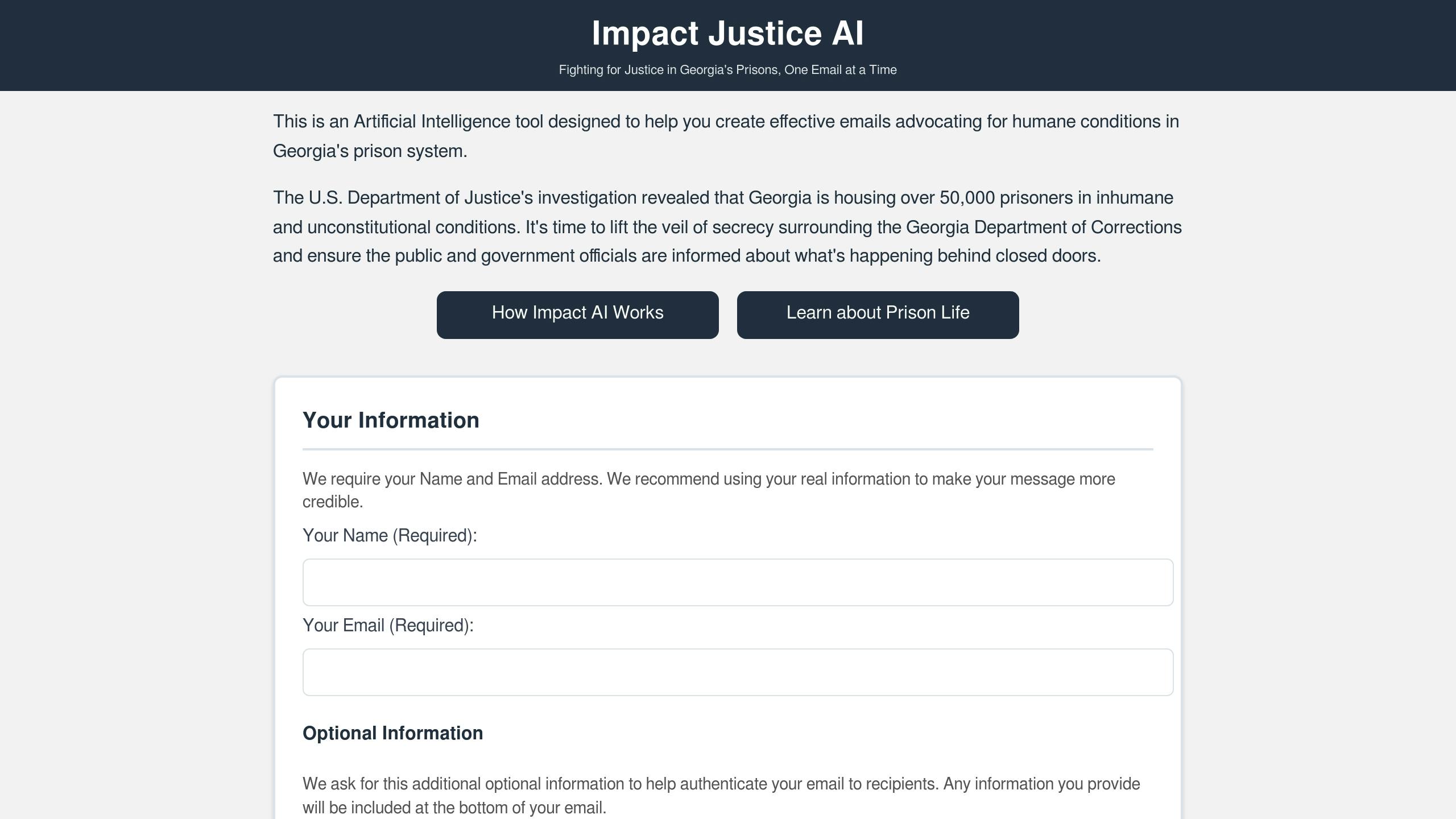- Legislative Audits: Focus on operational efficiency, conducted regularly by state authorities.
- DOJ Reports: Investigate constitutional violations, using federal authority to enforce reforms.
Quick Comparison
| Aspect | Legislative Audits | DOJ Reports |
|---|---|---|
| Scope | Operational risks, policy compliance | Civil rights violations, systemic issues |
| Frequency | Annual/Biennial | As needed |
| Authority | State-level corrections improvements | Federal enforcement via legal actions |
| Key Strength | Routine checks for operational efficiency | Deep investigations into systemic abuse |
Both systems are necessary for meaningful reform, addressing day-to-day operations and constitutional rights. Together, they aim to improve safety, healthcare, and accountability in Georgia’s prisons.
Georgia Dept. of Corrections responds to DOJ prisons report
How Legislative Audits and DOJ Reports Work
Georgia’s prison oversight relies on two separate but interconnected processes, each with its own purpose and legal foundation. Here’s a closer look at how these systems operate and their role in driving prison reform.
Legislative Audit Process
Legislative audits are guided by a structured, state-mandated process designed to assess compliance and efficiency.
| Phase | Activities |
|---|---|
| Planning & Risk Assessment | Defining scope, scoring facility risks |
| On-site Investigation | Facility visits, interviews, document review |
| Analysis & Reporting | Data analysis, compiling findings |
| Corrective Action | Agency response and improvement planning |
These audits focus on operational practices and adherence to state policies. Auditors review financial records, staffing, and facility conditions, ensuring compliance with regulations. Agencies are required to submit improvement plans within 60 days [3]. This process is geared toward improving efficiency and policy alignment, differing from the DOJ’s rights-driven investigations.
DOJ Report Process
Unlike legislative audits, federal oversight under the Civil Rights of Institutionalized Persons Act (CRIPA) targets constitutional violations, using the DOJ’s legal authority and investigative resources.
Initial Assessment
The process starts with reviewing complaints and analyzing data to define the scope of the investigation.
Comprehensive Investigation
DOJ investigators conduct detailed facility tours, access all areas, hold confidential interviews, review records, and consult experts. This thorough approach often yields findings that either enhance or challenge the outcomes of state audits.
Findings and Enforcement
If violations are identified, the DOJ can enforce changes through court-monitored consent decrees. These legally binding agreements ensure specific reforms are implemented, offering stronger enforcement compared to the recommendations from legislative audits [2].
Comparing Legislative Audits and DOJ Reports
Georgia uses two main oversight tools to ensure accountability in its prison system. Each serves a different purpose, and understanding their roles helps stakeholders make the most of them.
Side-by-Side Comparison
Here’s a quick look at how these two approaches differ:
| Aspect | Legislative Audits | DOJ Reports |
|---|---|---|
| Scope | Focuses on specific facility risks | Examines broader civil rights violations |
| Enforcement Authority | Implements corrective actions through state processes | Uses federal consent decrees or legal action |
Strengths and Weaknesses of Each Approach
What Legislative Audits Do Well
Legislative audits are great for spotting operational problems quickly. They rely on regular inspections, and their recommendations are usually handled internally by the Georgia Department of Corrections.
What DOJ Reports Bring to the Table
The DOJ digs deeper. Their investigations often uncover systemic constitutional issues that state audits might overlook.
Where They Fall Short
Legislative audits can miss larger, systemic rights violations. This is where federal oversight steps in, offering a broader perspective. Together, these systems create opportunities for advocacy, as detailed in the Tools for Public Action section.
Georgia Prison Oversight Examples
A closer look at recent findings about Georgia’s prison system highlights the difference between legislative audits and Department of Justice (DOJ) investigations.
2024 DOJ Report Findings
The DOJ’s 2024 report uncovered troubling statistics, including a fivefold increase in prison homicides between 2018 and 2023 [2]. Their records pointed to 18 likely homicides, compared to the Georgia Department of Corrections’ (GDC) June 2024 report, which listed only 6 [2]. The DOJ determined that these conditions violated the Eighth Amendment’s ban on cruel and unusual punishment [1], emphasizing the gap between federal oversight and state corrections management.
Georgia Legislative Audit Results
In contrast to the DOJ’s findings, state audits concentrated on operational changes. A 2024 Senate study committee addressed areas like boosting officer pay, expanding mental health services, and reviewing vendor contracts. These efforts focused on practical reforms rather than constitutional violations.
This comparison underscores the differing priorities: federal investigations highlight systemic issues, while state audits aim to address day-to-day operations. This dynamic is further explored in the Tools for Public Action section.
Tools for Public Action
Oversight findings become practical tools for advocacy when used strategically. Legislative audits and DOJ reports offer critical data for addressing Georgia’s prison conditions. Knowing how to leverage these resources is key to driving change.
Impact Justice AI: Turning Data Into Action

Impact Justice AI helps transform oversight findings into advocacy efforts. It generates emails that blend DOJ report statistics, legislative audit recommendations, and personal stories. These messages can be sent to pre-loaded contacts, including Georgia legislators, corrections officials, and media outlets. By integrating state audit and federal report data, this tool simplifies advocacy efforts and amplifies their impact.
Making the Most of Oversight Data
Advocacy works best when both legislative audits and DOJ report findings are used strategically. Advocacy groups often rely on audit data to push for budget transparency, while journalists highlight discrepancies between DOJ findings and state claims. For individuals, referencing specific violations – like “3.5× homicides [1]” – can strengthen their outreach to officials.
To build stronger cases for prison reform, advocates should combine state and federal oversight data. Additional insights can also be drawn from internal audits conducted by the Georgia Department of Corrections’ Facilities Division, providing further evidence to support calls for change.
Conclusion: Why Both Systems Matter
Georgia’s dual oversight system plays a key role in monitoring its prisons. The 2024 DOJ investigation into 17 Georgia prisons exposed serious constitutional violations and systemic problems [1]. At the same time, legislative audits ensure regular checks on operational efficiency and resource use, shaping state policy decisions.
Each system serves a distinct purpose. Legislative audits focus on daily operations and budget compliance, while the DOJ tackles constitutional issues using federal authority [2]. Together, they address different but equally important priorities.
This collaboration has led to improvements like reduced homicide rates and better staffing. For example, while legislative audits ensure rules are followed, the DOJ investigation revealed major problems such as misclassified inmate deaths and gaps in mental health care [1].
To drive real change in Georgia’s prison system, both oversight mechanisms must continue working side by side. Their combined efforts ensure that operational standards are upheld while also addressing critical human rights issues. This balanced approach is essential for meaningful and lasting prison reform.
